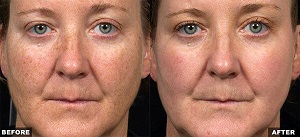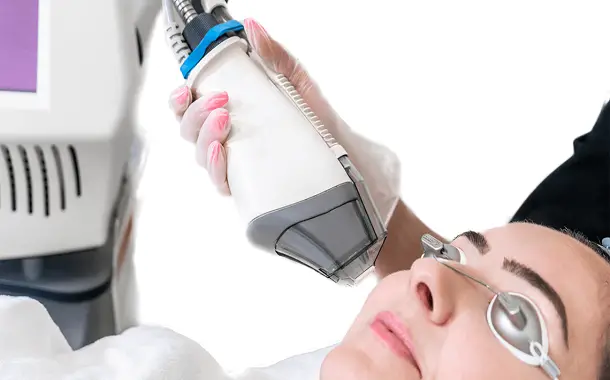Fraxel Laser Treatments Cost
Clinical experience, studies, and long observations have highlighted the fact that both patients and doctors have long wanted to be able to have superb results in eliminating deep wrinkles and erasing deep acne scars without the patients requiring social rest or recovery time.
The Fraxel laser gives very good results in skin regeneration and rejuvenation treatments. The pulsed laser light intensifies the intracellular metabolism, the synthesis of elastin and collagen accelerates, and the effect on the skin is deep and lasting. Being a non-invasive and painless procedure, it is indicated not only in the treatment of wrinkles but also of scars, pigment spots, and red and pink stretch marks. Due to the tissue contraction effect, it has an impact similar to a facelift.
How much does Fraxel Laser Treatments Cost?
There are several factors that will affect the costs of Fraxel laser treatments such as the number of treatments needed to achieve the desired results, your geographical location, the treated area, the doctor you choose, the type of Fraxel machine they use, and whether it is non-ablative or ablative. Considering these factors, the average price per session would be anywhere between $800 and $1,000.
Most clinics and doctors’ offices offer discounts if you commit to multiple treatment sessions in one go, resulting in a total cost of $1,600 to $3,000 for a full Fraxel laser treatment, depending on the required number of sessions.
According to most doctors, the average patient will need three to four sessions to see the desired results and encourage collagen production. Most of the time this will depend on how damaged is the patient’s skin.
In the table below you will find the average costs for Fraxel laser treatment for different body areas.
| Body Part | Total Price on Average |
| Stretch Marks | $800+ |
| Neck | $1,100+ |
| Hands | $800+ |
| Full Face + Eyelids | $2,000+ |
| Full Face | $1,600+ |
| Chest | $1,100+ |
How does the Fraxel laser treatment work?
Thanks to the unique fractional technology, the Fraxel repair laser can be used both superficially and deeply at the same time. Fraxel repair allows the varying of the level of energy, the level of treatment, and the number of sessions, which allows the doctor to adapt each treatment to the needs of the patient. The “repair” process is recommended for people who have wrinkles on the lips, forehead, eyes, or neck or suffer from pigmentary lesions or skin aged by the sun, or eliminate some scars caused by acne.
This process continues even after the treatment is stopped. After a single session, the affected skin recovers by 20 percent. Between four and six sessions are required, at intervals of 2-4 weeks.
What does the Fraxel laser treat?
Fraxel laser treatments are for both women and men.
Fraxel treats severe skin conditions including fine to moderate wrinkles, aging skin, dry skin, irregular pigmentation, scar correction, post-acne treatment, broken blood vessels, neck and décolleté rejuvenation, hand rejuvenation, excess skin from around the eyes (eyelids), and perioral wrinkles.
Procedure overview
There are two main factors that contribute to the aging of the skin, namely the genetic factor and the way of life such as sun exposure, smoking, or pollution. Combined, these factors lead to skin aging causing wrinkles, skin tightening, sun spots, and more. In all these cases Fraxel technology can help.
You might also like our articles on the cost of chemical peels, HydraFacial, or Cryotherapy.
The Fraxel treatment acts on the epidermis and the dermis. The second one stimulates the production of collagen and elastin, proteins that ensure the skin’s youth and suppleness. With age and exposure to the sun, these proteins break down faster than the body can rebuild them. As a result, the skin begins to show signs of aging.
 Fraxel generates microscopic laser columns deep into the dermis to create small wounds that trigger the body’s natural healing process. Fraxel targets only a certain fraction of the skin allowing the body to heal faster. This natural healing process allows the body to produce collagen and elastin resulting in taut, fresh, and youthful skin.
Fraxel generates microscopic laser columns deep into the dermis to create small wounds that trigger the body’s natural healing process. Fraxel targets only a certain fraction of the skin allowing the body to heal faster. This natural healing process allows the body to produce collagen and elastin resulting in taut, fresh, and youthful skin.
The Fraxel treatment uses what is called fractional CO2 technology. This technology allows the removal or excision of a fraction of the skin using microscopic laser columns. This leaves the surrounding tissue intact which facilitates faster healing. It can be seen that at 3 months, the damaged cells have been replaced by new, healthy tissue.
The office visit should be scheduled 2 hours before the treatment, during which time you will have a special anesthetic cream on the area to be treated. The treatment is done under a jet of cold air, which provides additional comfort for the patient, and its duration varies between 10 and 30 minutes, depending on the treated surface. The discomfort you will feel during the treatment is extremely short, and at the end of the treatment, the area will be more sensitive for 30-60 minutes.
Recovery
Since the treatment is carried out without the skin becoming depigmented and without swelling, the person who uses this type of treatment can resume their activity as soon as they leave the dermatologist’s office. After finishing a session with this type of laser, women can apply foundation, and men can shave without problems.
In the case of people who have very light skin, a slight closing of the pigment was observed, thus the skin acquires a tanned appearance. In order for the skin to heal evenly, dermatologists recommend that the treatment be applied to all lesions at the same time. Otherwise, stains may appear.
Side effects
Fraxel laser treatment has been safely tested on over 10,000 patients worldwide. However, like any laser procedure, there are side effects such as prolonged redness, swelling, delayed healing, and risk of infection. Even though Fraxel technology is an aggressive procedure, there is a lower risk of serious side effects than with traditional CO2 laser treatment.
Types of Fraxel treatments
There are three different types of Fraxel treatments, that vary depending on the number of procedures needed, results, after-care, and aggressiveness.
Fraxel re:pair
What is unique about Fraxel re:pair is that it uses microscopic treatment areas to ablate deep into the dermis. Although the CO2 laser – due to its physical characteristics – does not protect the stratum corneum (keratinized epidermis), the unique Fraxel technology protects a large part of the surrounding tissue, which results in immediate coagulation, tissue contraction, and skin tightening.
Fraxel re:store
An average patient will need three to five treatments to restore her/his skin appearance. This is a non-ablative treatment designed to help with mild to severe skin damage like dry patches on the skin, acne scars, age spots, surgical scars, and melasma.
Fraxel re:fine
This version is known to be the gentlest and is usually used for maintenance purposes. This cosmetic procedure is non-ablative and will help to stop any signs of aging, including fine lines, pigment irregularities, skin damage, and fine lines. Four to six sessions will be necessary and the discomfort is quite mild.
Important things to consider
With the help of the Fraxel repair system, extraordinary results are obtained that no other laser can achieve in such a short time, which has visible effects for up to a year. The results are similar to a facelift but without complications or long recovery time. Only 3 days after the treatment, the skin is visibly rejuvenated and regenerated.
Fraxel laser treatment can be combined with other cosmetic procedures like semipermanent/temporary fillers, Restylane or Juvederm.


Leave a Reply
Want to join the discussion?Feel free to contribute!